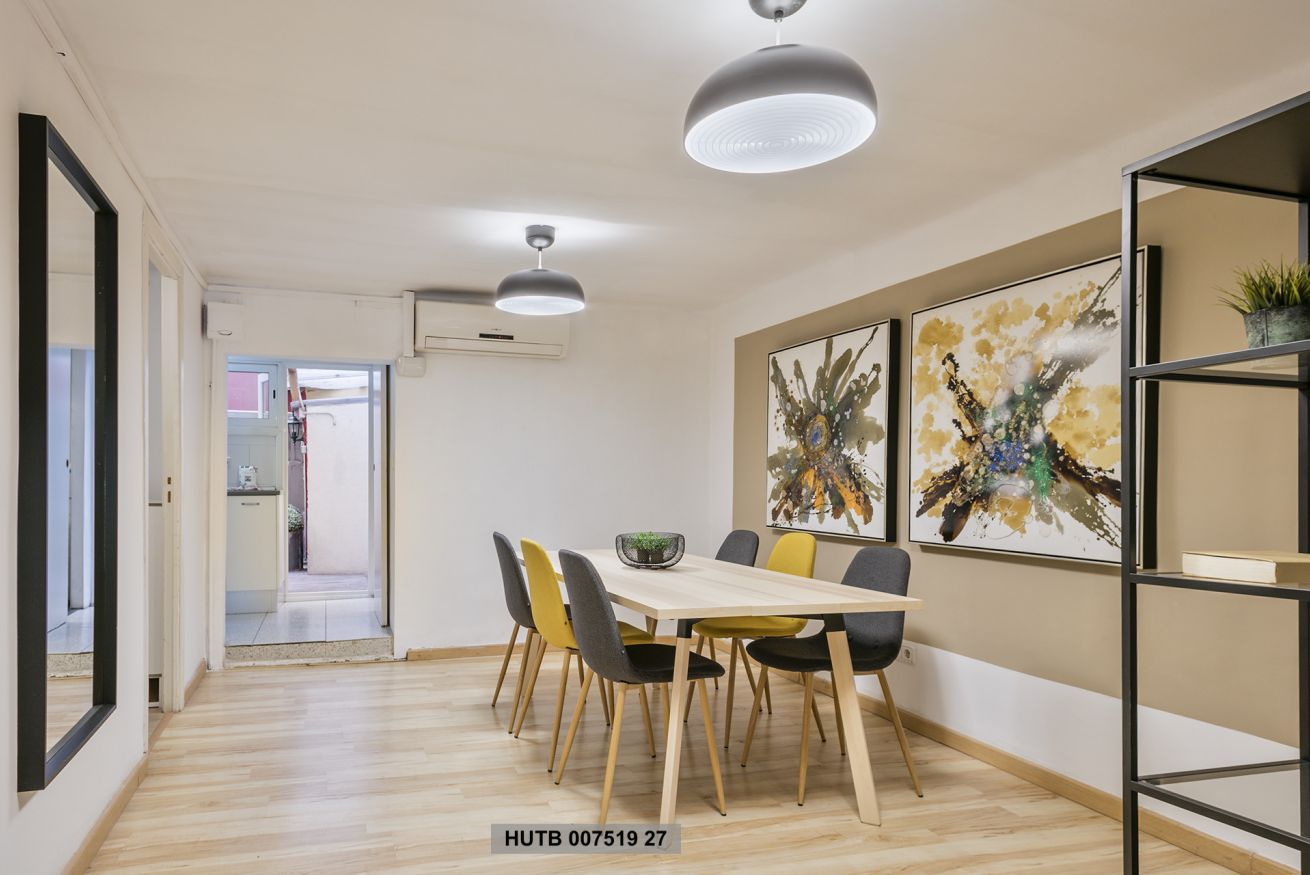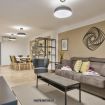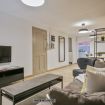












7.OFFICE UP
ApartmentDescription
6 Guests
2 bedrooms
1 bathroom
65 m2
1° floor
Código de Registro Turístico: HUTB-00751927
A spacious ground-floor apartment in a 1900s building with all the charm of Barcelona's old buildings. Ideal for living like a local in a lively commercial and restaurant area, just a 10-minute walk from the famous Sagrada Familia and only 15 minutes from Passeig de Gràcia, the city's commercial hub.
It features a large living room with a sofa bed for two people. In the front, there is a bright double bedroom, and in the back, another with two beds. The kitchen is fully equipped, as is the bathroom with a spacious shower, and there's a small backyard, ideal for smokers.
La Dreta de l'Eixample was the area where Ildefons Cerdà's project began to materialize, i.e., the extension of Barcelona beyond the demolished city walls in the mid-19th century. It stretches between the streets of Balmes - which served as a barrier for many years due to the open-air passage of the Sarrià train - and Passeig de Sant Joan, one of the essential mountain-to-sea routes in Cerdà's plan.
The first group of houses was built at the current intersection of Consell de Cent and Roger de Llúria streets. Initially, La Dreta de l'Eixample hosted some significant industrial establishments, such as the Elizalde factory, one of the first in Spain to manufacture cars and engines. Gradually, however, it became the preferred residential neighborhood of the bourgeoisie, with the artistic explosion of modernism represented by prominent buildings such as La Pedrera, Casa Batlló, and Casa Ametller, among many others.
In addition to residence, and often displacing it, tertiary economic activity increasingly established itself: commerce, offices, corporate headquarters, cinemas, theaters, etc., especially in the most central area (between Llúria and Balmes) and around the powerful axis of Passeig de Gràcia, which followed the old road connecting the walled city to the municipality of Gràcia. This axis remains today the center of the city's economic dynamism and commercial projection.
It is important to note that Plaça de Catalunya was not included in Cerdà's plan. This "omission" was corrected by the force of circumstances: its position as a hinge between the old town and the new Eixample naturally made it the city's nerve center; the passage of years has only reinforced this fact.
It features a large living room with a sofa bed for two people. In the front, there is a bright double bedroom, and in the back, another with two beds. The kitchen is fully equipped, as is the bathroom with a spacious shower, and there's a small backyard, ideal for smokers.
La Dreta de l'Eixample was the area where Ildefons Cerdà's project began to materialize, i.e., the extension of Barcelona beyond the demolished city walls in the mid-19th century. It stretches between the streets of Balmes - which served as a barrier for many years due to the open-air passage of the Sarrià train - and Passeig de Sant Joan, one of the essential mountain-to-sea routes in Cerdà's plan.
The first group of houses was built at the current intersection of Consell de Cent and Roger de Llúria streets. Initially, La Dreta de l'Eixample hosted some significant industrial establishments, such as the Elizalde factory, one of the first in Spain to manufacture cars and engines. Gradually, however, it became the preferred residential neighborhood of the bourgeoisie, with the artistic explosion of modernism represented by prominent buildings such as La Pedrera, Casa Batlló, and Casa Ametller, among many others.
In addition to residence, and often displacing it, tertiary economic activity increasingly established itself: commerce, offices, corporate headquarters, cinemas, theaters, etc., especially in the most central area (between Llúria and Balmes) and around the powerful axis of Passeig de Gràcia, which followed the old road connecting the walled city to the municipality of Gràcia. This axis remains today the center of the city's economic dynamism and commercial projection.
It is important to note that Plaça de Catalunya was not included in Cerdà's plan. This "omission" was corrected by the force of circumstances: its position as a hinge between the old town and the new Eixample naturally made it the city's nerve center; the passage of years has only reinforced this fact.
Read more
Read less
Check-in: 16:00 - 00:00
Check-out: 12:00
Features
Check-in: 16:00 - 00:00
Check-out: 12:00
Standard occupancy: 6
Max occupancy: 6
Floor: 1°
Elevator: No
Amenities
Air conditioning
Balcony/terrace
Bed linen
Blackout curtain
Centralised heating
Closets in room
Coffee/tea maker
Color television
Contactless check-in
Cups/glassware
Dining highchair
Dining room
Dining room seats
Dishes and silverware
Double beds
Duvet
Full kitchen
Hairdryer
Hangers
High chair
High speed wireless
Hot water
Internet access
Iron
King bed
Kitchen
Kitchen oven
Kitchen stove
Kitchen supplies
Lamp
Microwave
Pack n play travel crib
Plates and bowls
Pots and pans
Private bathroom
Private entrance
Room windows open
Shower
Shower only
Sight seeing
Silverware/utensils
Sitting area
Sofa bed
Tables and chairs
Toaster oven
Towels
Town
Tv
Washer











 Holiday rental
Holiday rental Mid term rental
Mid term rental















